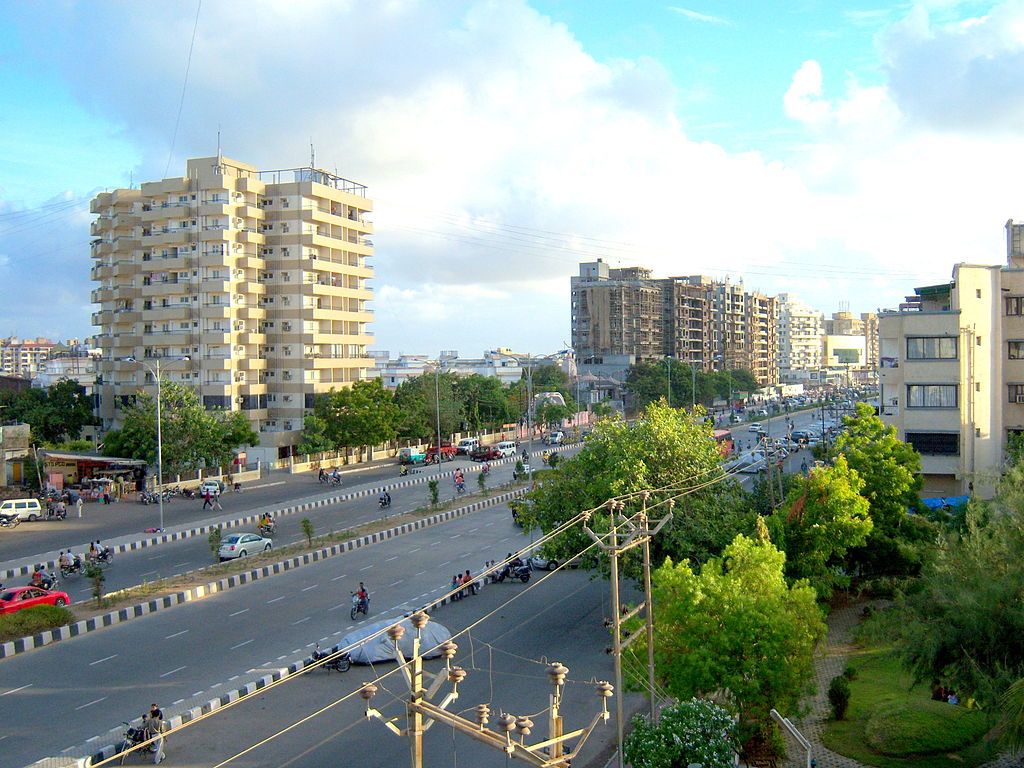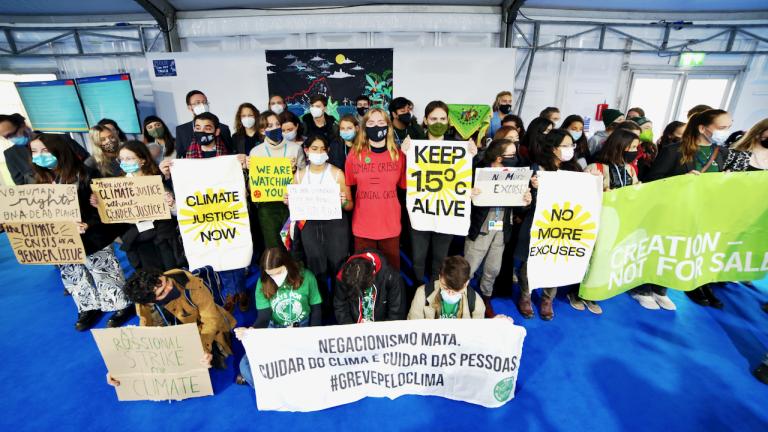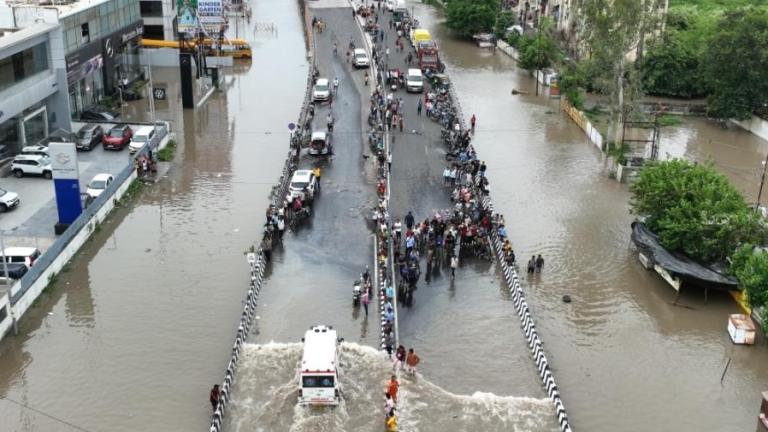News
To counter environmental perils, cities turn to nature
By connecting cities with nature, we can address the triple planetary crises of climate change, nature and biodiversity loss, and pollution. Here are five municipalities embracing ecosystem-based approaches, including UrbanShift city Surat.
Green roofs. Unsplash / Chuttersnap.
Cities have long been about carving out a place for humans apart from nature. But that model has begun to change. Urban planners are increasingly realizing that to fend off a growing list of environmental threats, they need to harness what is known as ecosystem-based approaches.
These strategies run the gamut from tree planting to the creation of urban gardens. On 23 February, sub-national leaders will explore ecosystem-based approaches at the United Nations Environment Assembly (UNEA) Cities and Regions Summit.
Hosted by the UN Environment Programme (UNEP), the summit will showcase how nature can help cities reduce greenhouse gas emissions, stave off extreme heat, protect wildlife and filter pollution, all while creating jobs and economic opportunities. For example, UNEP data finds that simply planting trees on city streets would give 77 million people a 1°C reprieve on hot days.
Ahead of the Cities and Regions Summit, here are five municipalities that are embracing ecosystem-based approaches.

1. Surat, India: Greener city, cleaner air
Located on the western coast of India, Surat is aiming to increase green cover to over 25 per cent from 18 per cent. The city is also implementing a public transportation system to reduce congestion and air pollution, in addition to working with the construction sector to follow green building standards.
“When water and trees are adversely affected, so are human beings,” says Shri Banchhanidhi Pani, the Municipal Commissioner of Surat. “That is why sustainability in dense, rapidly developing cities is important. We must consider how best to create that balance between nature and development, and prevent pollution from affecting natural resources and human health.”
Surat is a beneficiary of UrbanShift, a UNEP-led initiative committed to promoting integrated, low-carbon development in more than 23 cities around the world.
2. Rio de Janeiro, Brazil: Inner-city farming reducing hunger
The Manguinhos Community Garden, the biggest garden of its kind in Latin America, was created as part of an effort to boost economic growth while safeguarding the environment.
To develop the garden, Rio residents removed 700 truckloads of waste, prepared the ground for food crops, and built nurseries, greenhouses and water tanks. Every month, two tons of organic food are distributed to 800 households at no cost. The Rio de Janeiro City Hall is also supporting the Carioca Community Gardens Program. As of 2021, the initiative included 49 community gardens, of which 25 are at schools and 24 are in vulnerable neighbourhoods. The programme supplies around 80 tons of fresh vegetables annually, with half of the produce donated to nearby public shelters, nursing homes and schools.
At the Cities Summit, the International Resource Panel (IRP), together with UNEP will launch Urban Agriculture’s Potential to Advance Multiple Sustainability Goals – An IRP Think Piece that evaluates how urban agriculture can help cities move towards sustainable urban food systems and a circular economy, along with policy guidance including a road map for designing “fit-for-purpose” urban agriculture policies, taking into account the interaction between urban and rural systems.
3. Madrid, Spain: Beating the heat with green corridors
Madrid is looking long-term by building a green wall around the city. The 75-kilometre urban forest, with nearly 500,000 new trees, aims to improve the air quality within the city and lower temperatures. It will absorb 175,000 tons of greenhouse emissions per year and connect to surrounding forests.
4. New York, United States: Turning concrete jungle to urban forest
The New York City Council and the New York Restoration Project have joined forces to plant 1 million trees in five boroughs. Since 2016 there has been an estimated 20 per cent increase in the city’s forest cover, offering New Yorkers an escape from the concrete jungle. The initiative has also been designed to help cool the city. Heat reduction services from urban tree cover in the United States are estimated to save up to $12.1 billion annually.
5. Seoul, South Korea: Uncovering the cooling power of water
In Seoul, an effort to restore the Cheonggyecheon stream replaced 5.8 km of elevated expressway that covered the stream with a mixed-use waterfront corridor. The work decreased local temperatures by 3.3°C to 5.9°C, compared to a parallel road a few blocks away. Seoul has also added nearly 2,000 urban forests and gardens. These projects have increased biodiversity, improved air quality, and reduced ambient temperatures.

UNEP supports countries and cities mainstreaming ecosystem-based approaches by developing knowledge tools and policy guidance such as UNEP’s Integrated Guidelines for Neighbourhood Design.
These tools aim to inspire further action by national governments and city authorities to enhance ecosystem-based approaches in cities to address the planetary crises.
The UNEP-hosted Cool Coalition is supporting actions on the ground, by working with cities worldwide to combat extreme heat by turning to nature, and through the GEF-7 funded impact programme UrbanShift to make use of integrated approaches.
In addition, UNEP engages in key political processes to highlight the importance of ecosystem-based approaches in cities; examples include the G20, the World Urban Forum and UNEA.
Nature for Human and Ecosystem Health is one of the key thematic areas of the resumed session of the UN Environment Assembly (UNEA 5.2) to be held from 28 February to 2 March 2022. UNEA is the world’s highest environmental decision-making body. Through its resolutions and calls to action, the Assembly provides leadership and catalyzes intergovernmental action on the environment.
Learn more

Surat: The Smart City Leading India's Sustainable Urban Development Movement
The Municipal Commissioner of Surat spoke with us about the city’s challenges, successes and goals in the path towards a sustainable urban future.

Reflections from International Youth Day
UrbanShift's Youth Day webinar highlighted inspiring youth and city led sustainability initiatives from China, India, Indonesia and Sierra Leone, with speakers reiterating the importance of meaningfully engaging young people in climate action.

Engaging youth in climate action: Pragmatically moving forward
Young people must be involved in critical decisions concerning their future and given an active role in addressing the climate emergency. Join UrbanShift for a lively discussion on this topic on International Youth Day.

Building City Capacities for Urban Resilience: Three Learning Modules to Tackle Climate Risks
These self-study courses guide city officials through best practices for assessing climate risks and mitigating flood and heat hazards.

